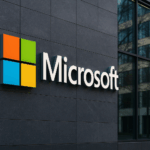A recent security blunder involving top Trump administration officials has unintentionally drawn widespread attention to the Signal messaging app. The incident, in which U.S. military plans were disclosed in a group chat that mistakenly included a journalist, has led to a sharp spike in Signal’s global user adoption. As concerns about privacy and secure communications resurface, the app has seen a record-breaking increase in downloads, positioning it as a leading option among encrypted messaging platforms. This episode has also sparked broader discussions around digital security and the role of encrypted platforms in sensitive communications.
Before this incident, Signal had experienced periodic surges in popularity, such as during the WhatsApp privacy policy controversy in early 2021. At that time, endorsements by figures like Elon Musk helped boost downloads. However, those gains were more gradual compared to the spike after the recent leak. Unlike previous surges driven by public figures or privacy debates, this growth stemmed from an operational lapse at the government level, introducing the app to new users across both civilian and professional sectors.
How did the conversation leak impact Signal’s popularity?
On March 24, a private Signal group chat containing Vice President J.D. Vance, Defense Secretary Pete Hegseth, and National Security Advisor Mike Waltz accidentally added The Atlantic editor-in-chief Jeffrey Goldberg. This group, used to discuss U.S. strike plans on the Yemeni Houthis, exposed sensitive information to an outsider. Following the publication of this mistake, Signal’s downloads rose significantly, increasing by over 33 percent in a single day and reaching 195,000 daily downloads by March 26.
What could this growth mean for Signal’s long-term sustainability?
Signal’s nonprofit model relies heavily on donations rather than advertising or data sales. With global downloads surging to 8.8 million in the last quarter—up 299 percent from the same period the year before—the platform could see a parallel rise in financial support. Meredith Whittaker, president of the Signal Foundation, had previously projected an annual budget need of $50 million by 2025. The organization reported operating expenses of $35.8 million in 2023, suggesting this recent boost in visibility could help bridge the funding gap.
Jun Harada, head of growth and partnerships at Signal, commented on the scale of the app’s U.S. growth in light of the incident, stating,
“This is the largest U.S. growth movement by a massive margin.”
Signal’s founder, Moxie Marlinspike, also reacted to the event on social media, humorously noting the unusual situation as a promotional point,
“One of the many great reasons to be on Signal: the possibility of being added by the Vice President to a group chat about military operations.”
The app’s origins trace back to 2014 under the initiative of Moxie Marlinspike, with the Signal Foundation taking over in 2018 after a $50 million endowment from WhatsApp co-founder Brian Acton. Signal has since positioned itself as a privacy-first application, appealing to users seeking an alternative to mainstream messaging platforms. Its nonprofit status, however, has raised questions about financial sustainability, particularly as user numbers grow and infrastructure demands increase.
Signal’s current momentum highlights the public’s evolving awareness of communication privacy and digital security, especially in light of political and geopolitical events. As encrypted platforms become more intertwined with both governmental and civilian use, the challenge will be maintaining secure protocols while accommodating an expanded and diverse user base. For users, understanding the importance of operational security—even when using encrypted apps—remains critical. Misuse or user error, such as misdirected messages, can still lead to major consequences regardless of technical safeguards. Signal’s spike in popularity may translate into financial backing and user retention if it can demonstrate that it not only protects data but helps users avoid operational mishaps.










